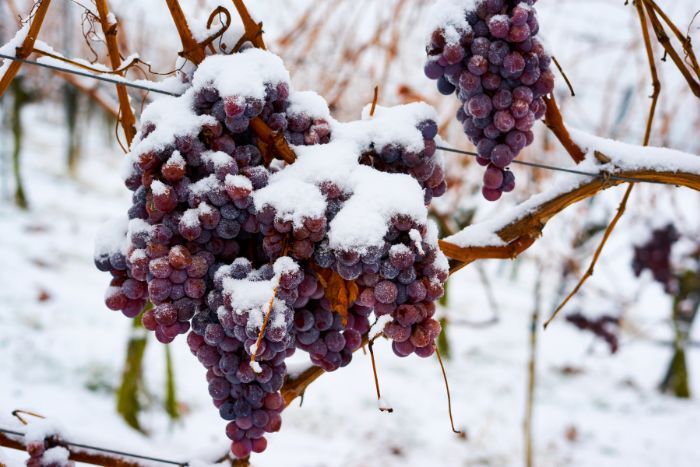Sweet but Strong: the Secret of Ice Wine Flavour
Discover what makes ice wine so unique: acidity, sugar concentration, and a subtle balance that creates a sweet yet refreshing taste.

Have you ever tasted a glass of ice wine and wondered why it is so unusually rich, sweet, yet not too heavy? This special wine, born of cold and patience, hides a subtle balance between acidity, residual sugar, and flavour intensity.
It is this balance that makes ice wine unique among other dessert wines, from Tokaji to Pedro Ximénez.
Why is acidity so important?
Without acidity, sweetness would turn into syrup. Ice wine is pressed from grapes that are harvested when the temperature drops to around -7 °C or even lower. In the cold, the water in the berries freezes, and the juice becomes highly concentrated. This produces a very sweet liquid, but it retains a refreshing acidity.

It is this acidity that maintains the balance – it is like a backbone that holds the whole flavour structure together. A sip of ice wine is never just sugar; it awakens the palate, creates liveliness, and invites you to take another sip.
Residual sugar: not just sweetness, but texture too
On average, ice wine has about 180–320 g/l of residual sugar. This seems like a lot, but the sweetness does not feel overwhelming. Why? Because sugar is not just a flavour component here—it also adds texture. The wine has a thick consistency, like honey or syrup, but it remains smooth on the palate because the acidity prevents it from becoming difficult to drink.
Balance of taste: science and art in one
The ratio of acidity to sugar is the key formula that explains why ice wine is so unique. If there were more sugar and less acidity, it would be too sweet. If there were too much acidity, the taste would be too sharp, reminiscent of lemon juice.
The skill lies in the fact that producers must predict the concentration of the grapes and balance it during fermentation. This is one of the most complex processes in winemaking.
£10
Special offer available for a minimum purchase of £99. Discount voucher valid for four weeks from issue date. Cannot be used in conjunction with other promotions except for the free delivery special offer.
Why is ice wine so expensive and highly valued?
Producing ice wine is a real challenge. It requires not only cold weather, but also patience: the berries must hang on the vine until winter, at risk of being damaged by birds, rot, or sudden weather changes. The harvest is very small—sometimes only a few glasses from the entire vine.
That is why ice wine is a special gift or an exceptional highlight at dinner. It is not an everyday drink, but an experience that is worth waiting for.
How to enjoy ice wine?
- Serve chilled, but not too cold (around 8–10 °C).
- Pair with blue cheese or foie gras – a classic combination.
- If you like desserts, try it with fruit tarts or creamy desserts.
Most importantly, don't forget that a glass of ice wine is a dessert in itself. Ultimately, ice wine is more than just a sweet treat in a glass—it is a combination of science, nature, and the winemaker's craftsmanship. Its taste proves that sweetness and freshness can go hand in hand, creating an unparalleled balance.
If you have not yet tasted this special wine, it is worth adding it to your next gourmet discovery – because every sip reminds you that true pleasure lies in balance.